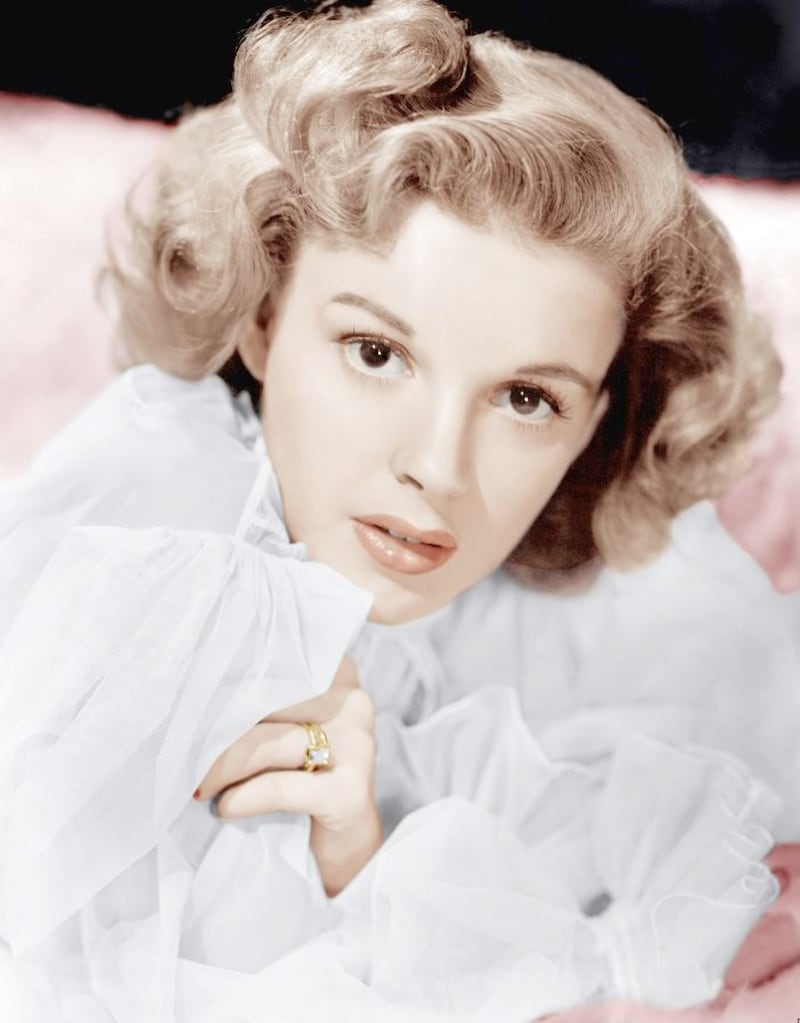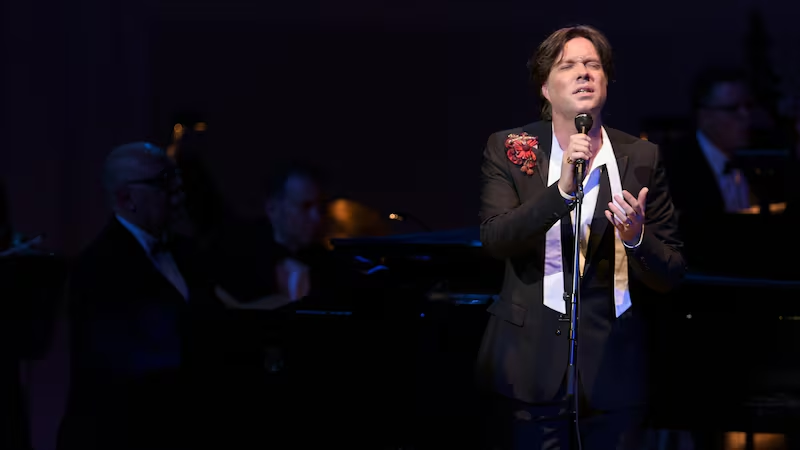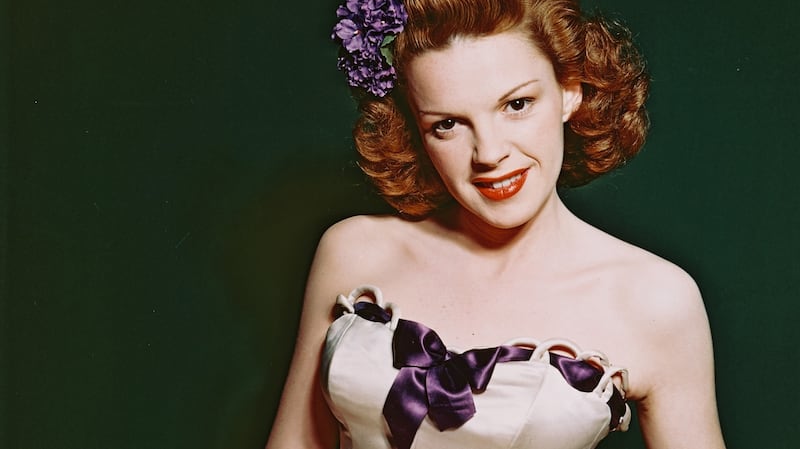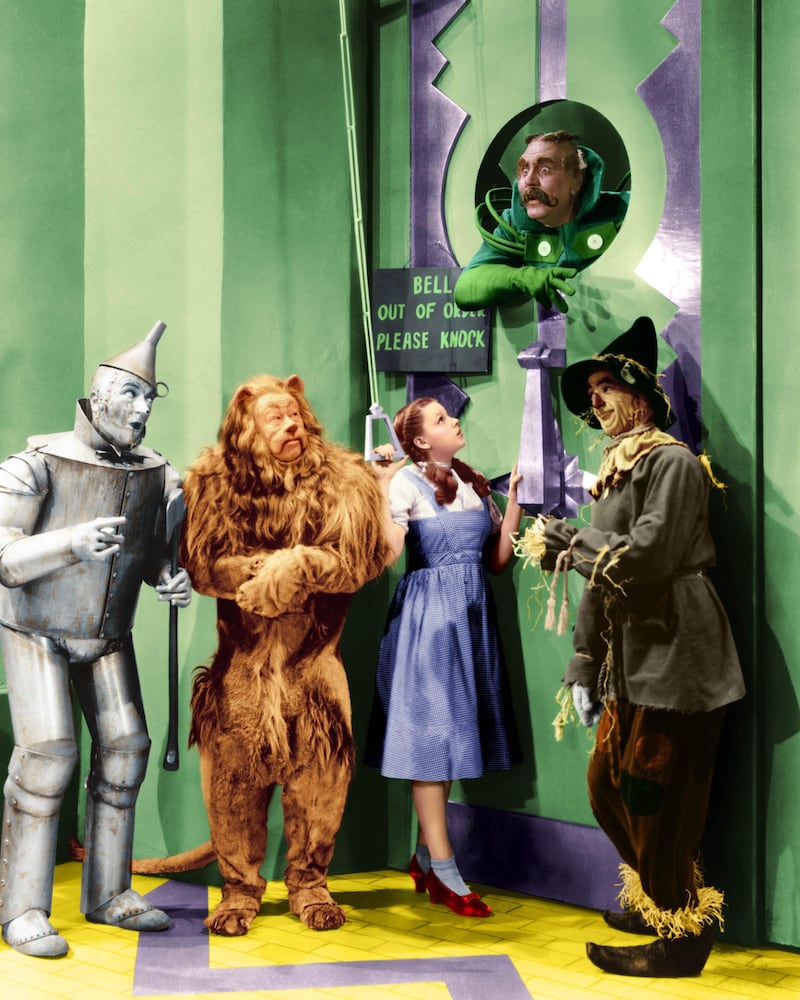Judy, a new biopic concerning Judy Garland, was adapted from Peter Quilter’s stage play End of the Rainbow, a work that writer Robert Leleux has characterised as “a gay version of Passion of the Christ”.
The film, which features a big, showy turn from Renée Zellweger, is careful to include two fictionalised gay super-fans who have bought many tickets for Garland’s five-week booking at the Talk of the Town nightclub in London in 1969, just months before her death from a barbiturate overdose, aged 47.
It’s the latest manifestation of Judyism, the gay, quasi-religious worship of The Wizard of Oz star. As long ago as 1968, Mart Crowley included the reprimand: “What’s more boring than a queen doing a Judy Garland imitation?” in his groundbreaking, LGBTQ-themed play The Boys in the Band. “Openly gay,” jokes the great John Waters, “sounds like you’re running into parties screaming, ‘Got any Judy Garland records?’”
Stanley Kramer, who directed her in Judgement at Nuremberg, said that every Garland performance was a declaration
Garland was keenly aware of her position in the community. She had many gay friends – including Roger Edens, Charles Walters and George Cukor – a gay father and two gay (or bisexual) husbands in Vincente Minnelli and Mark Herron. She urged her daughter Liza Minnelli to marry Peter Allen – also gay – who had an affair with her husband Mark Herron.
“When I die I have visions of fags singing ‘Over the Rainbow’ and the flag at Fire Island being flown at half mast,” she told Liza, a reference to a preferred, upstate NY gay resort. She went further in the film I Could Go On Singing (1963), with a wink to gay viewers in the audience: “I’ve already drunk enough coffee to float Fire Island,” she quips.
Judy’s “gay icon status” even has its own mythology. Garland’s most performed song, Over the Rainbow, may be the inspiration for the universal symbol of the LGBTQ movement, the rainbow flag. The timing of her funeral has often been linked to the Stonewall Riots, a theory that has recently and repeatedly been debunked in recent years.
It has a certain provocative charm, nonetheless. Charles Kaiser’s 1997 book The Gay Metropolis: The Landmark History of Gay Life in America notes that the Stonewall protests happened hours after Garland’s spectacular funeral, an event that saw 20,000 New Yorkers line the streets to see her white glass coffin – the biggest funeral Manhattan had witnessed since Valentino’s death in 1927.

“No one will ever know for sure which was the most important reason for what happened next,” wrote Kaiser. “The freshness in their minds of Judy Garland’s funeral, or the example of all the previous rebellions of the sixties – the civil rights revolution, the sexual revolution, and the psychedelic revolution, each of which had punctured gaping holes in crumbling traditions of passivity, puritanism and bigotry.”
Inspired
In 2016, Rufus Wainwright returned to Carnegie Hall to mark the 10th anniversary of his celebrated 2006 shows in that venue, shows that were inspired by Judy Garland’s legendary performance there on April 23rd, 1961.

"Whether it's childbirth or death or marriage or war or peace, these songs become a prism for those big experiences," he told Playbill. " . . . it's the attitude you need to perform it, as if you're a soldier or an athlete, you need so much physical stamina to make it to the other end . . . That's definitely what made Judy a hero for the community – you're going to battle when that overture drums up. She embodies what I love about musical theatre and opera – especially this real danger when a singer steps on the stage and the idea that they have to basically defy gravity with their music. That what makes a diva a gay icon."
Stanley Kramer, who directed her in Judgement at Nuremberg, said that every Garland performance was a declaration: “Here is my heart, break it . . . There’s nobody in the entertainment world, actor or singer, who can run the complete range of emotions from pathos to power in the way she can.”
This idea of Judy Garland's repertoire, especially her Grammy-winning live recording Judy at Carnegie Hall (1961) – the first double album to sell more than a million units – as a dramatisation of gay life, is not new.
She was “the Elvis for homosexuals”, Barry Walters once wrote in The Advocate, “a symbol of emotional liberation, a woman who struggled to live and love without restraint. She couldn’t do it in her real life, of course, and neither could her fans. But she did it in her songs, and with them she brought along anyone who similarly dared to care too much.”
Mel Torme noted Garland’s gay icon status with rather less tact. Recalling his time on The Judy Garland Show in his 1970 memoir, he said it was “a rule, not an exception” that studio audiences for her CBS show were “heavily populated” with “odd fellows”.
William Goldman, in a 1967 review of Garland’s final engagement at New York’s Palace Theatre for Esquire magazine describes “. . . a young boy, maybe 21, maybe less . . . staring up at her and wringing his hands. He cannot and will not stop with his hands, even though his constant wringing pressure has forced the skin to burst.”
Time magazine, reviewing the same performance, noted that: “. . . a disproportionate part of her nightly claque seems to be homosexual. The boys in the tight trousers roll their eyes, tear at their hair and practically levitate from their seats, particularly when Judy sings Over the Rainbow”.
The same review quotes from “Manhattan psychiatrists’ interpretations of the gay-Garland connection,” concluding that: “Judy was beaten up by life, embattled and ultimately had to become more masculine. She has the power that homosexuals would like to have, and they attempt to attain it by idolising her.”
Androgyny
Academic consideration of the relationship between Garland and the LGBTQ community began in earnest with Richard Dyer’s foundational 2004 essay, Judy Garland and Gay Men. In it, Dyer identifies three characteristics that make Judy Garland available for gay identification and pleasure: androgyny, camp and ordinariness.
He also divides Judy’s career into pre-1950 and post-1950 ventures. 1950 was the year when MGM fired Garland and she tried, on two occasions, to take her own life. Oral history records gay fans bandaging their necks by way of response.
“This event,” wrote Dyer, “constituted for the public a break with Garland’s uncomplicated, ordinary MGM image, [and] made possible a reading of Garland as having a special relationship with suffering, ordinariness, normality, and it is this relationship that structures most of the gay reading.”
Garland, he argues, “was the image of family heterosexual normality . . . it became clear after 1950 that she was not after all the ordinary girl she appeared to be. That suggested a relationship to ordinariness homologous with that of gay identity. To turn out not ordinary after being saturated with the values of ordinariness structures Garland’s career and the standard gay biography alike.”

Garland's post-1950 career was characterised by tipsy, frail, unreliable but frequently blistering live performances and a self-reflexive ruination amplified by the quasi-biographical attributes of A Star is Born (1954) and I Could Go On Singing (1962). The former depicted Garland as a rising star at a moment when her career was on the wane; the latter, in which a shaking Garland journeys to England to reignite her career – just as she did with the Talk of the Town shows – is almost unbearably poignant to watch.
These saddening works seem to recall all of the horrors visited upon her during her showbusiness career. She began performing when she was just two-and-a-half years old, under pushy momager Ethel Gumm, or “the real Wicked Witch of the West”, as Garland had it.
Sexually harassed
At MGM she was starved, drugged and constantly sexually harassed: the Munchkins on The Wizard of Oz set would, according to her ex-husband Sidney Luft’s memoir, put their hands up her skirt during the shoot. By that time, as she confided in Margaret Hamilton, who played the Wicked Witch, she could no longer sleep or wake up without the pills the studio were giving her to get through 18-hour days.
She had several abortions at the behest of the studio and her mother – including one after a brief affair with Tyrone Power – before she had Liza, a pregnancy that caused MGM head Louis B Mayer (who previously tried to fondle her and called her his “little hunchback”) to fly into a rage. “We simply can’t have that baby have a child,” he said.
Can this decades-long love affair really be over?
Even before MGM fired her, there were battles with drug addiction, alcoholism, weight gain, suicide attempts and sanitorium visits. At the time of her death, she had chalked up five marriages, four divorces and thousands in unpaid taxes. By the early 1960s she often relied on late night cash-in-hand turns at gay piano bars to get her through the next day.
It was a heartbreaking tragedy that was appealing for gay men struggling through a criminalised existence.
The phrase “friend of Dorothy” – a slang term for gay men that refers to Garland’s character in The Wizard of Oz – dates to the second World War and likely relates to the Cowardly Lion, an avowed sissy, and the alternate, rainbow family that Dorothy gathers around her. Nascent subcultures tend to cling to relatively recent events and icons and yet, since the turn of the millennium, there is mounting evidence that seems to undermine the notion that the LGBTQ community are ”friends of Dorothy”.

Writing in the New York Times in 2012, Garland fan Robert Leleux suggests that: “Today Judyism, like Yiddish, is little more than a vague cultural memory.”
Writing in The Atlantic in 2000, under the heading “The Queen Is Dead: Once a gay icon, Judy Garland has become an embarrassment”, Michael Joseph Gross suggests that: “Judy Garland began losing her power over gay men because we got that message and started becoming more integrated characters than the screaming queens of yore. We no longer need a surrogate to embody the conflicts that so many of us experience, because we now have more and better resources for sorting them out for ourselves.”
Can this decades-long love affair really be over? The makers of Judy are clearly hoping she still has that Old Black Magic among the LGBTQ fan base who loyally stood by her during her brief, terrible life.
Judy is released October 2nd


















